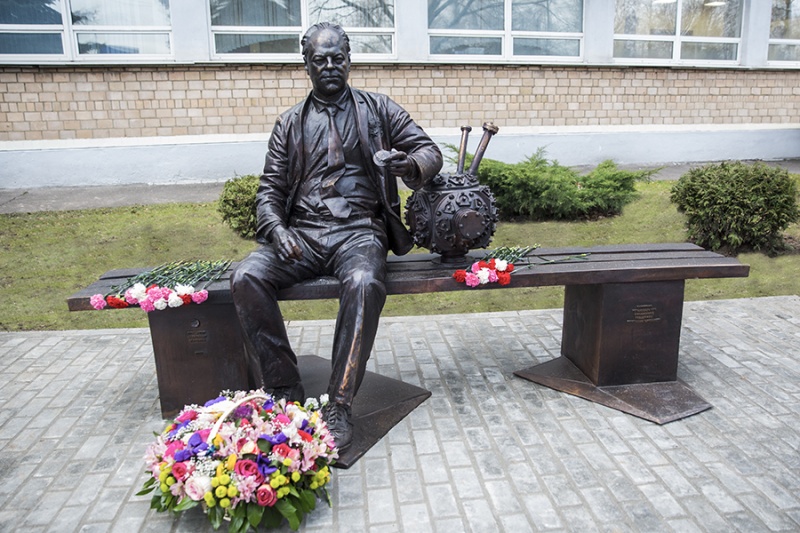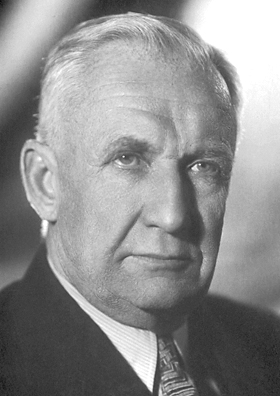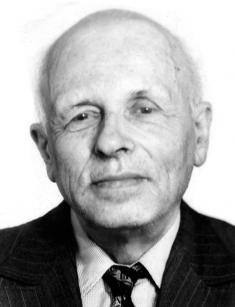Nobel laureates
Six Nobel laureates studied or worked at MEPhI: Nicolay Basov, Nikolay Semenov, Pavel Cherenkov, Igor Tamm, Andrey Sakharov, Ilya Frank.
Three of them (Nicolay Basov, Nikolay Semenov, and Pavel Cherenkov) received the Nobel Prize while working at the university.
 Nicolay Basov (1922-2001) entered the MEPhI in 1946 and defended his diploma in 1950. He worked at the university from 1960 to 2001. In 1978 he organized and headed the Department of quantum electronics, later renamed to the Department of laser physics.
Nicolay Basov (1922-2001) entered the MEPhI in 1946 and defended his diploma in 1950. He worked at the university from 1960 to 2001. In 1978 he organized and headed the Department of quantum electronics, later renamed to the Department of laser physics.
Basov discovered the stimulated emission. It means that a light packet, a photon, coming in contact with an atom can cause an electron to descend to a lower energy level so that an additional photon with the same amount of energy is emitted. If electrons are elevated to higher energy levels with the help of heat or light, an avalanche-like effect occurs when they fall to lower levels.
In the 1950s Nicolay Basov, Aleksandr Prokhorov and Charles Townes contributed to putting this phenomenon into practical use in masers and lasers, which produce concentrated and coherent beams of microwaves and light, respectively.
While working at MEPhI, in 1964, Basov, together with Prokhorov and Townes, received the Nobel Prize in Physics "for fundamental work in the field of quantum electronics, which has led to the construction of oscillators and amplifiers based on the maser-laser principle"

Monument to Nicolay Basov (sculptor Mironov) was installed at MEPhI in 2017.
 Nikolay Semenov (1896-1986) worked at MEPhI from 1951 to 1960.
Nikolay Semenov (1896-1986) worked at MEPhI from 1951 to 1960.
During chemical reactions, atoms and molecules regroup and form new constellations. When molecules formed during a reaction readily react with molecules present from the beginning, a chain reaction can occur. Explosions and fire are examples of chain reactions.
During the 1930s Nikolay Semenov analyzed conditions and sequences of events involved in chain reactions from a theoretical and mathematical standpoint. Among other things, he found that the theoretical results corresponded with observations of the reactions between phosporus and oxygen and between hydrogen and oxygen.
While working at MEPhI, in 1956, Nikolay Semenov received the Nobel Prize in Chemistry "for researches into the mechanism of chemical reactions".
 Pavel Cherenkov (1904–1990) worked at MEPhI from 1951 to 1972.
Pavel Cherenkov (1904–1990) worked at MEPhI from 1951 to 1972.
In certain media the speed of light is lower than in a vacuum and particles can travel faster than light. One result of this was discovered in 1934 by Pavel Cherenkov, when he saw a bluish light around a radioactive preparation placed in water.
Igor Tamm and Ilya Frank explained the phenomenon in 1937. On their way through a medium, charged particles disturb electrons in the medium. When these resume their position, they emit light. Normally this does not produce any light that can be observed, but if the particle moves faster than light, a kind of backwash of light appears.
While working at MEPhI, in 1958, Pavel Cherenkov, together with Ilya Frank and Igor Tamm received the Nobel Prize in Physics "for the discovery and the interpretation of the Cherenkov effect".
 Igor Tamm (1895-1971) worked at MEPhI from 1945 to 1950. He was the first head of the Department of theoretical nuclear physics.
Igor Tamm (1895-1971) worked at MEPhI from 1945 to 1950. He was the first head of the Department of theoretical nuclear physics.
In 1937, Igor Tamm and Ilya Frank explained the phenomenon of bluish light around a radioactive preparation placed in water. On their way through a medium, charged particles disturb electrons in the medium. When these resume their position, they emit light. Normally this does not produce any light that can be observed, but if the particle moves faster than light, a kind of backwash of light appears.
In 1958, Igor Tamm together with Pavel Cherenkov and Ilya Frank received the Nobel Prize in Physics "for the discovery and the interpretation of the Cherenkov effect".

Monument to Igor Tamm (sculptor A. Mironov) was installed at MEPhI in 2018.
 Andrei Sakharov (1921-1989) worked at MEPhI in 1949-1950.
Andrei Sakharov (1921-1989) worked at MEPhI in 1949-1950.
The father of the Soviet hydrogen bomb, Andrei Sakharov, was awarded the Nobel Peace Prize in 1975 for his opposition to the abuse of power and his work for human rights.
Sakharov revealed his talent for theoretical physics at an early age, and got a doctorate in 1945. From 1948 on, under the supervision of the Nobel Laureate Igor Tamm, he worked on the development of a Soviet hydrogen bomb. Sakharov was patriotic, and believed it was important to break the American monopoly on nuclear weapons. But from the late 1950s on, he issued warnings against the consequences of the arms race.
 Ilya Frank (1908—1990) worked at MEPhI.
Ilya Frank (1908—1990) worked at MEPhI.
In 1937, Ilya Frank and Igor Tamm explained the phenomenon of bluish light around a radioactive preparation placed in water. On their way through a medium, charged particles disturb electrons in the medium. When these resume their position, they emit light. Normally this does not produce any light that can be observed, but if the particle moves faster than light, a kind of backwash of light appears.
In 1958, Ilya Frank together with Pavel Cherenkov and Igor Tamm received the Nobel Prize in Physics "for the discovery and the interpretation of the Cherenkov effect".





